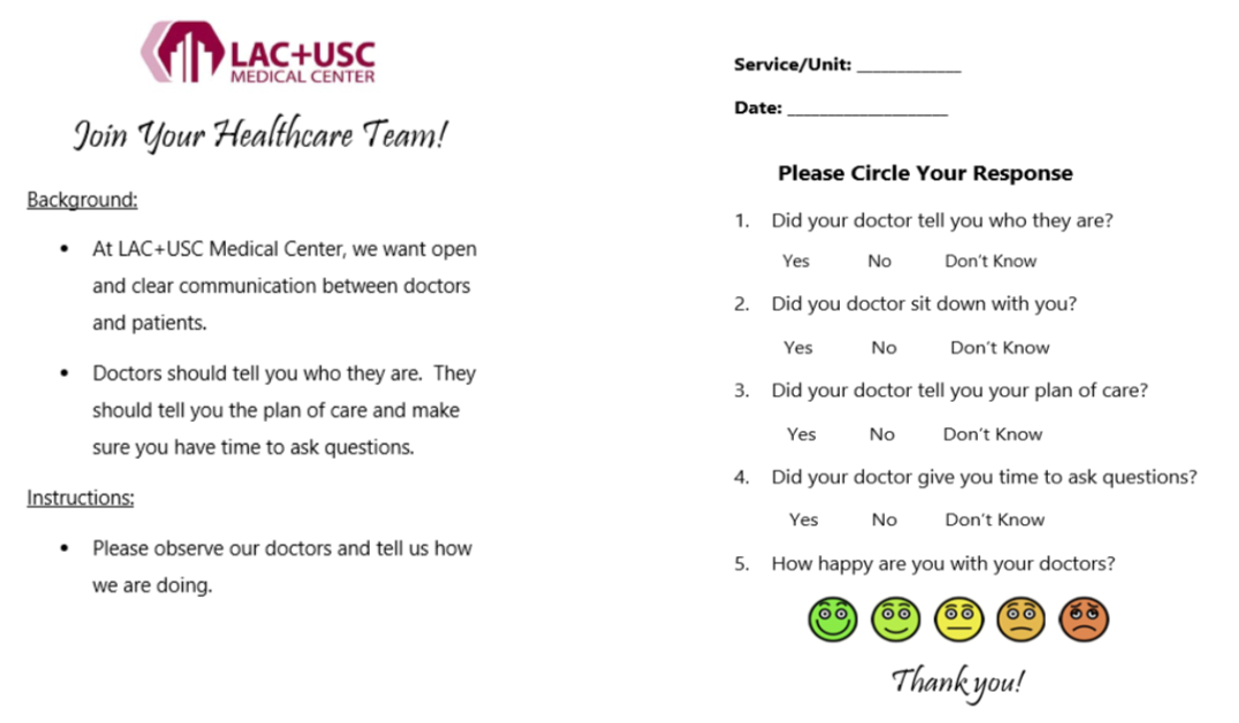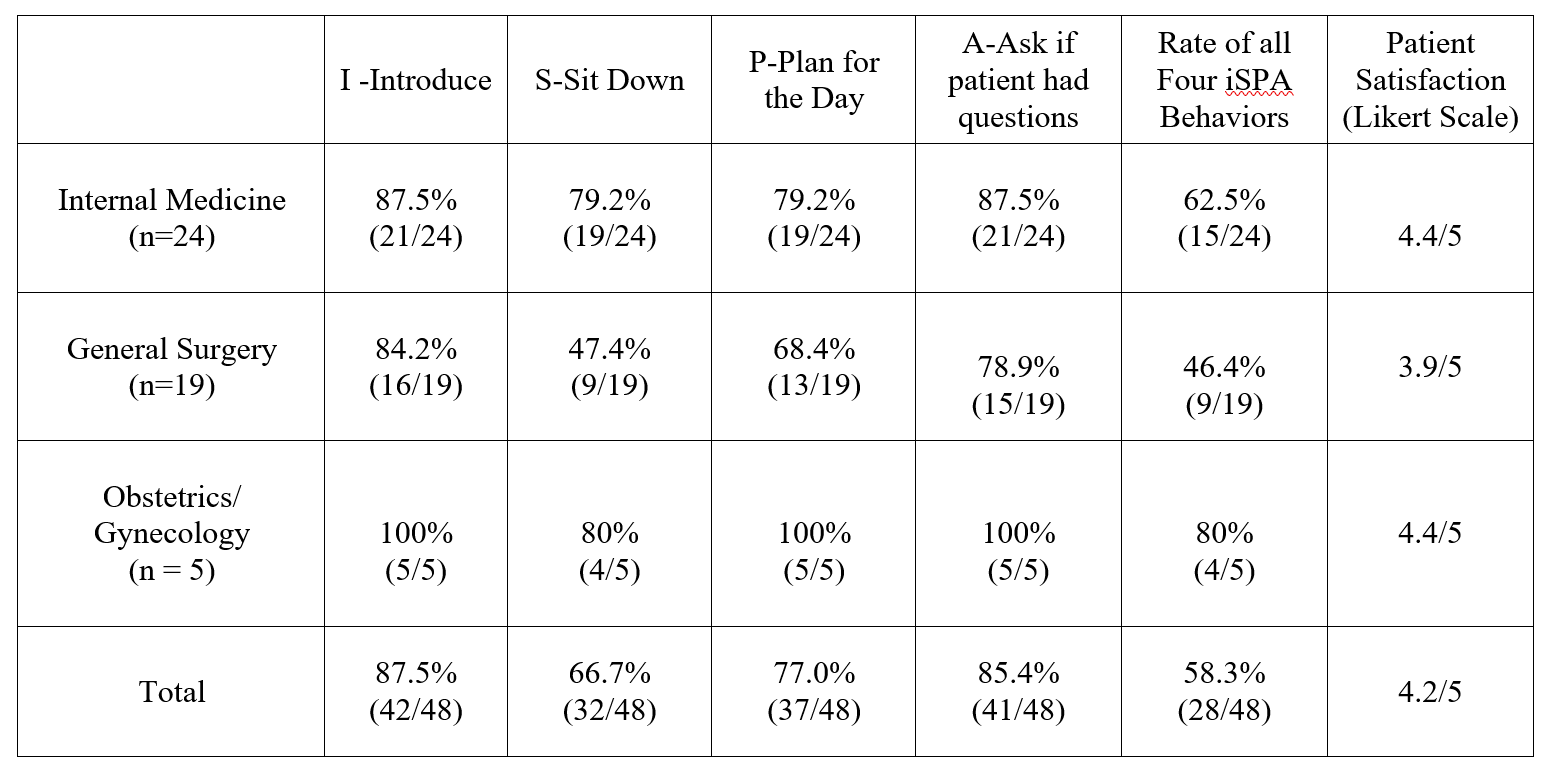Background: In the quest to improve patient satisfaction scores, providers and health systems alike are frustrated with the inability to obtain real-time satisfaction data. Indeed, HCAHPS data lags by six months, and makes it exceedingly difficult to provide real-time feedback to physicians on their communication with patients. As a result, we developed a patient-centered audit system that evaluates physician to patient communication in order to provide real-time physician feedback.
Purpose: To Improve Performance in the Communication with Doctors Domain on the HCAHPS survey to >90% “Top Box” by June 30, 2020
Description: Our facility has developed a framework for physician-patient communication, called iSPA, (i- introduce yourself, s- sit down, p- plan for the day, a- ask if the patient has questions). We are currently training all residents and staff on the iSPA technique, and plan to implement the framework hospital-wide in 2020. In order to assess the effect of iSPA on the quality of communication perceived by patients, we created an audit tool that is completed by the patient. Selected hospitalized patients are asked at random to complete a short, paper-based audit form after the physician encounter occurs. This form asks patients to document whether or not their provider completed each of the four iSPA behaviors, and to rate their satisfaction with their physician encounters (Figure 1). We started collecting baseline data in October 2019 on four medical-surgical units of our public teaching hospital. To date, we have data for Internal Medicine, OB/GYN, and General Surgery services. Our baseline data reveals relatively high percentages for each key behavior across services, however the aggregate rate for performance of all four behaviors in an encounter is low across services (Table 1). Patient satisfaction scores were favorable for all services, although slightly lower for the surgical service, which correlates with the lower rate of iSPA behaviors (Table 1).
Conclusions: We developed a patient audit tool to evaluate communication between patients and physicians at our hospital, and through this pilot, we demonstrated that patients can be engaged in providing real-time feedback to physicians on their communication. We will be using this tool to provide physician feedback on their communication, and use of iSPA technique after training sessions. We hope that the combination of structured communication and real-time audit and feedback will improve our patient satisfaction.


